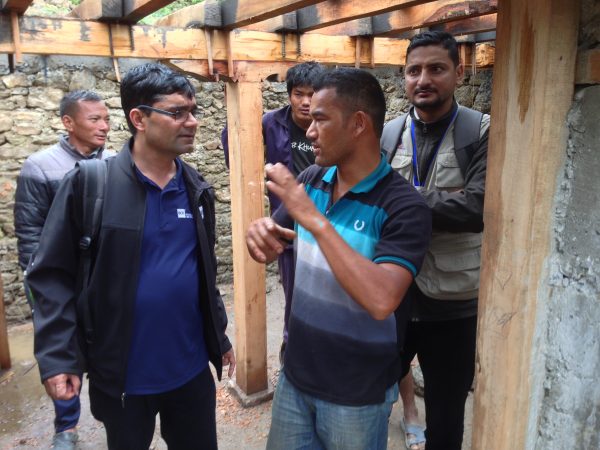In April 2015, Nepal was struck by a major earthquake of 7.8 (out of 10) magnitude.
The damage to people and property was, in the true sense of the term, awesome. At least 9,000 Nepalese were killed, over 22,000 injured and thousands more left homeless.
More than 2,500 public buildings and over 500,000 private dwellings collapsed. Over 7,000 school buildings and more than 1,000 healthcare facilities were damaged.
Soon after the disaster, the Canadian Association for Earthquake Engineering (CAEE), a national, non-profit, technical society, sent a reconnaissance team of engineers and geoscientists to the small in area but large in population (30 million) Himalayan country.
They looked at the impact of the disaster on built Nepal from several different angles, such as the seismic performance of residential and institutional buildings, and possible ways to restore and retrofit non-engineered buildings.
According to the reconnaissance team’s report, the buildings that suffered the worst damage were low-rise unreinforced adobe and stone masonry buildings in remote rural areas, where they are the most common type of structure.
The Canadian investigators found that the stone masonry buildings had major design and construction flaws, and the construction quality was poor.

Although Nepal’s National Building Code says that structures must be able to resist major earthquakes without collapse, the code is not mandatory in rural areas and does not apply to buildings that are made of local materials and with local knowledge, but usually without professional architect supervision.
The reconnaissance team, nevertheless, had some words of hope for rural Nepal.
It said proper construction techniques, especially those that maintain a building’s wall integrity while keeping the traditional construction material, will greatly reduce the risk of collapse of a stone masonry house during a seismic event.
The team made four specific and technical recommendations for improving the earthquake safety of stone masonry houses:
- Provide continuous reinforcing wood bands at all sill, lintel and floor levels.
- Do not construct stone masonry gable walls. Instead, build a stone masonry wall up to the eaves level (roof wood band level) and construct a gable using light-weight panels, such as bamboo mats or thin wooden planks that are attached to the roof.
- Provide floor joists that fully bear loads on walls in both horizontal directions. Anchor the joists to the walls where possible.
- Use stones of appropriate size and shape. Provide through-stones at regular intervals in random-rubble stone masonry walls.
The team leader of the CAEE reconnaissance team was Bishnu Pandey, a member of the civil engineering faculty in the B.C. Institute of Technology’s School of Construction and the Environment.
Born and raised in Nepal, Pandey did his undergraduate degree in that country before graduate work in Japan and at University of British Columbia.
“When Nepal gets earthquakes, it’s not as often as, say, California, but when they do occur, they’re usually severe, like the 2015 event,” said Pandey.
Although stone masonry is one of the weakest building materials, it is the main one used in villages in India, Pakistan and Nepal.
“It’s rational to build with stone masonry in rural Nepal,” said Pandey. “The materials are abundant and earthquakes are relatively infrequent. Furthermore, there is no viable alternative to stone in many communities.”
In order to have a fighting chance of withstanding the powerful horizontal forces that are unleashed in an earthquake, stone masonry needs steel reinforcement in the form of rebar.
“Villages in Nepal are not only impoverished, they’re isolated, too, with poor connections to the outside world,” said Pandey. “Steel is strong, but not practical in rural Nepal, because there’s no way to bring it in.”
One of the best alternatives to steel is wood reinforcement around the stone masonry, especially on top of the windows and doors and where the walls meet.
“Wood is relatively plentiful in Nepal and it can be carried in bundles by hand to where it’s needed,” said Pandey.
Another practical way to reinforce stone masonry is to use chicken wire. Like wood, it’s easy to be transported manually.
Pandey spent almost all of 2017 in Nepal working with government and helping to set up two types of training for masons.
A seven-day course for experienced masons trains them how to construct stone masonry buildings that, using wood or chicken wire, are more resistant to earthquakes.
A more extensive 49-day course trains novice masons from scratch how to build more earthquake-resistant buildings.
“Reconstruction was slow at the beginning,” said Pandey. “It took about a year for it to hit its stride. But now the villages are built stronger and they’ll be better able to resist the next earthquake.”











Recent Comments
comments for this post are closed